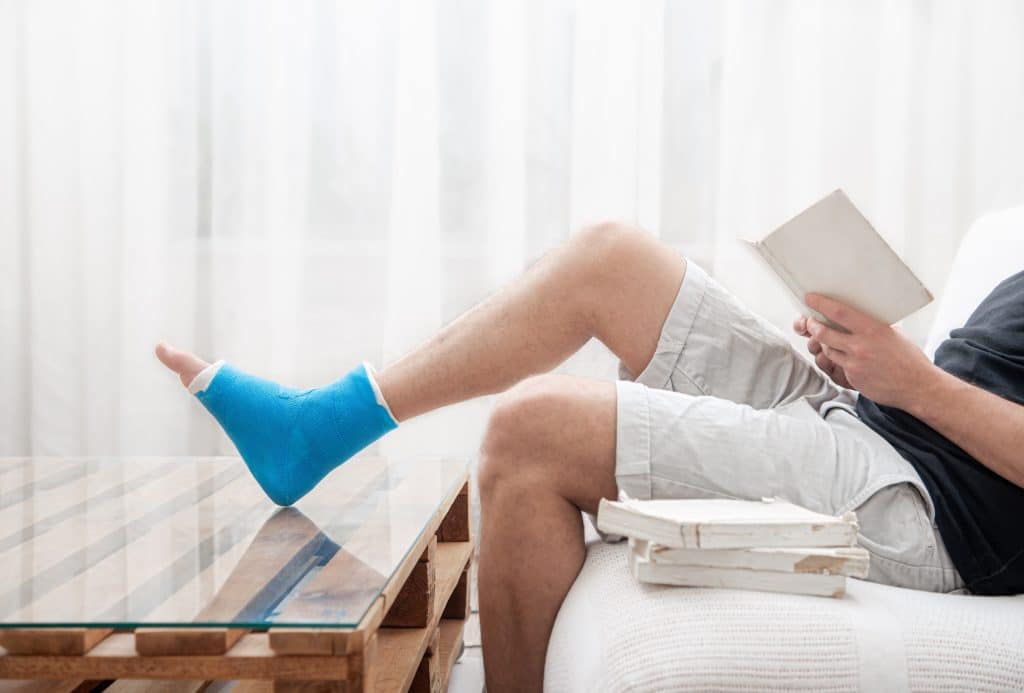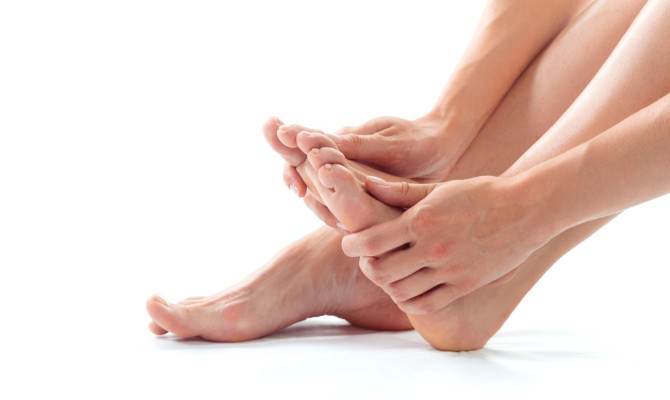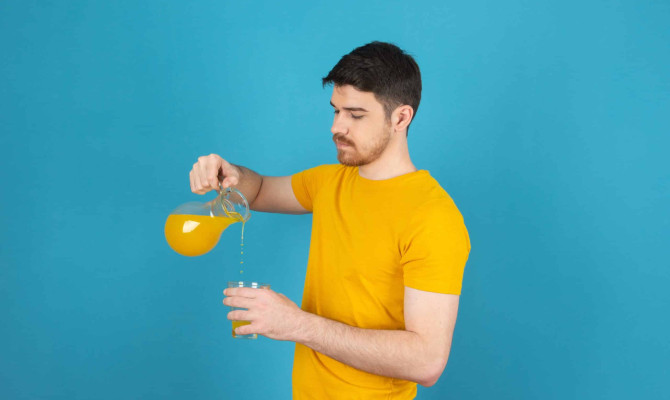Fracture : Causes, Symptoms, and Management

- Fracture
- 16 Aug 2023
Overview
What is a fracture?
The term fracture is medical terminology that refers to a bone fracture. Anything from a little crack to a total bone break could occur. It can break into several pieces in several places, along its length, width, or other ways. Most fractures happen as a bone is forced or compressed beyond its breaking point. Anyone, regardless of age, can suffer from a bone fracture. This article discusses the types of fractures, their causes, related problems, and treatment options.

Symptoms
What are the symptoms of a fracture?
Fracture symptoms can vary among individuals. However, the most typical signs of a fracture are as follows :
- An intense and sudden pain.
- Skin discoloration near the wound.
- A noticeable deformity.
- Swelling or bruising at the injured site.1Symptoms| Researched based study from Medlineplus.gov
- Bleeding if it’s an open fracture.
- Warmth or redness around the injured site.
- Numbness and tingling sensation.
- Limited mobility of injured area or nearby joints.
Types
Types of fractures
There are several types of fractures. A few commonly occurring ones may include the following:
- Simple or closed fractures – occur when there is no skin piercing from the shattered bone.
- Compound or open fractures – expose the fragmented bone and blood to the outside world through the skin and soft tissue. More likely are external bleeding and infection.2Types| Researched based study from Nlm.nih.gov
- Greenstick fracture – due to the flexibility of the remaining bone, the bone only fractures partially on one side. Occurs in children because of the flexibility of their bones compared to those of adults.
- A hairline fracture – a minor, sparsely fractured bone. It occurs most frequently due to stress, often from repetitive activities like running or jogging3Types| Researched based study from orthopaedics.com.sg
- Complicated fracture – occurs when the periosteum, the lining of the bone, as well as the veins, arteries, and nerves, are affected.
- Comminuted fractures – a complex fracture in which an impact breaks the bone into several pieces and usually heals more slowly.
- Compression fracture or crush fracture – occurs when two bones are pushed into each other. Such a fracture is possible in the vertebrae that form the backbone.
- Pathological fracture – occurs when a weakening of the bone due to a medical issue results in a fracture.4Types| Researched based study from Nlm.nih.gov
- Impacted fracture – a portion of a broken bone may hit another bone when it fractures.
- Longitudinal fracture – where the break runs through the length of the bone.
- Oblique fracture – happens in the direction opposite to the axis of the bone.
- Spiral fracture – At least some bone twists in this break.
- A transverse fracture – a bone break that runs perpendicular to the length of the bone.
- Avulsion fracture – The bone fractures when a muscle or ligament tugs on it. The shoulder and knee joints are more prone to this sort of fracture.5Types| Researched based study from Clevelandclinic.org
- Fracture dislocation – when there is a fracture of one of the joint bones along with a joint dislocation.
Causes
Causes of a fracture
The most typical reasons for fractures include
- A fall.
- Road traffic accidents (RTA).
- Getting injured during athletic activities or sports.
- Physical assault – child abuse.
- Bone disorder called osteoporosis – makes the bones brittle and vulnerable to fractures. 6Causes| Researched based study from Aaos.org
- Overuse of body parts can exhaust muscles and significantly strain bones. Stress fractures, which affect more athletes, can occur from this.
Risk
People at risk
The risk of fractures may be higher for the following individuals
- Older adults – as bones weaken, the risk of a break increases.
- Older adults with osteoporosis – are more susceptible to compression fractures, especially in the porous bone of the vertebrae.7Risk| Researched based study from Nlm.nih.gov
- Individuals with intestinal or endocrine issues.
- Women after menopause.
- Those who use corticosteroids.8Risk| Researched based study from Wiley.com
- People who lead inactive lives.
- People who consume alcohol.
- Smokers.
Diagnosis
Diagnosis of cancer
The doctor may inquire about the patient’s injuries, including how they occurred and any accompanying symptoms. Following that, there is a physical examination and the following few imaging tests:
Physical examination
The doctor may examine the injured site for:
- Bleeding.
- Swelling.
- Warmth.
- Any deformations.
The doctor may recommend a few imaging tests if a fracture at the site of the injury is suspected:
- An X-ray – is usually taken to diagnose any bone fracture.
- Magnetic resonance imaging (MRI) – determines whether nearby soft tissue structures such as ligaments, cartilage, or internal organs have been injured.
- A CT scan (Computed tomography scan) – offers the doctor or surgeon a more detailed image of the bones and the tissue around them than an X-ray.9Diagnosis| Researched based study from Clevelandclinic.org
- Doctors use bone scans to identify fractures that aren’t visible on X-rays.10Diagnosis| Researched based study from Mayoclinic.org
Treatment
Treatment of fracture
The purpose of treatment is to replace the broken fragments of bone, manage the pain, allow the bone to heal, avoid complications, and allow normal functioning of the fractured area.
The following techniques may be used in treatment
Non-surgical methods
- Splint or cast – immobilizes the wounded area to maintain the bone’s alignment and prevent its use or motion as the bone heals.
- Medicine – such as painkillers, is necessary to manage pain from fractures.
- Traction – stretches the tendons and muscles surrounding the shattered bone to aid in aligning and healing the fractured ends. Pulleys, strings, weights, and other devices are frequently used for traction.11Treatment| Researched based study from Hopkinsmedicine.org
Surgical methods
May be required to realign some types of shattered bones
- Open reduction with internal fixation – To hold the fragments of broken bones in place while they heal, surgeons insert metal rods, plates, or pins within the body.12Treatment| Researched based study from Medlineplus.gov
- Open reduction with external fixation – performed for complicated fractures that can’t be fixed internally or through open reduction.12Treatment| Researched based study from Medlineplus.gov To keep the shattered bone fragments in place while they mend, metal rods, plates, or pins are placed outside the body.
At-home care for a bone fracture
Along with receiving medical care, people may also need to follow the following advice:
- Make every effort to give enough rest to the fractured limb.
- Refrain from using direct heat until the cast has adequately set.
- Use crutches and other strategies as the nurses teach, as one may risk further damage if not correctly used.
- Till the fracture has healed, refrain from lifting weights or operating a vehicle.
- Avoid getting the cast wet since damp plaster gets brittle and won’t provide enough support as it should, and it might irritate the skin.
- To keep the area waterproof when showering, wrap the cast in plastic and tape it to the skin.
- Avoid sticking objects like pencils between the plaster cast and the limb if the skin underneath the cast is itchy.
- While the wounded area heals, movement restriction will probably be necessary.
- Consult a medical professional immediately if one has pins and needles, numbness, swelling, blue discoloration, or loss of mobility in the fingers or toes.
Prevention

How can one prevent fracture ?
Not all fractures can be avoided. But there are certain things one might be able to take to lessen their risk of bone fractures, such as :
- To maintain strong bones, consume a balanced calcium and vitamin D diet.
- Weight-bearing workouts can increase bone density and muscle mass, decreasing the chance of bone fractures.
- Maintain adequate lighting in your residence during the evenings and at night.
- When skiing, riding, rollerblading, or playing contact sports, wear safety equipment like a helmet, elbow, knee, wrist, and shin protectors.
- Make the house a secure place for children by locking the windows.
- Use non-skid mats in the bathtub and railings on stairs to prevent falls, especially among older individuals.
- The use of any tobacco product should be avoided because it can speed up bone mending and boost the risk of fractures.
- People with osteoporosis should get appropriate treatment for it.
Complications
Complications associated with fracture
Bone fractures may have the following consequences
- Bone growth disruption in children.
- Infection of the bone or bone marrow.13Complications| Researched based study from Nlm.nih.gov
- Bone death – occurs when the blood supply to the fractured bone is disrupted.14Complications| Researched based study from Nih.gov
- Problems with healing.
- Problems with the union of fractured bones.
- The limb is not aligned correctly.
- Too tight or too loosely fitted plaster cast.15Complications| Researched based study from betterhealth.vic.gov.au
Prognosis
Prognosis
The body can heal most fractures, but medical intervention is frequently required to hold the shattered bones in place, like the ones described in this article. Depending on the extent and location of the injury, the patient’s age, medical history, and how well they adhere to their doctor’s instructions, fractures can take several weeks to months to fully heal. Most of the time, the pain disappears before the healing is finished. People’s flexibility, range of motion, and muscle strength in the affected area will decrease. At the same time, they heal and may be regained by performing specific workouts recommended by a physiotherapist.
Any feedback on this article?
 This Articles content was accurate
This Articles content was accurate Very Informative Article
Very Informative Article I have a question or a comment
I have a question or a comment
 This article contains inaccurate content
This article contains inaccurate content This article was not helpful
This article was not helpful I have a question or a comment
I have a question or a comment
We appreciate your helpful feedback!
Checkout our social pages
References
-
Medline Plus
Fractures | Symptoms
-
National Library of Medicine
Open Fracture Management | Types
-
Singapore SPORTS and Orthopaedic Clinic
Hairline Fractures | Types
-
National Library of Medicine
Pathologic Fractures | Types
-
Cleveland Clinic
Avulsion Fracture | Types
-
The American Academy of Orthopaedic Surgeon
Fractures (Broken Bones) | Causes
-
National Library of Medicine
Diagnosis and treatment of osteoporotic fractures | Risk
-
Wiley Online Library
Use of oral corticosteroids and risk of fractures | Risk
-
Cleveland Clinic
Bone Fractures | Diagnosis
-
Mayo Clinic
Bone scan | Diagnosis
-
Johns Hopkins Medicine
Fractures | Treatment
-
Medline Plus
Bone fracture repair - series—Procedure | Treatment
-
National Library of Medicine
Infection after fracture fixation | Complications
-
National Institutes of Health
Osteonecrosis | Complications
-
Better Health Channel
Home Bones muscles and joints Bone fractures | Complications






































